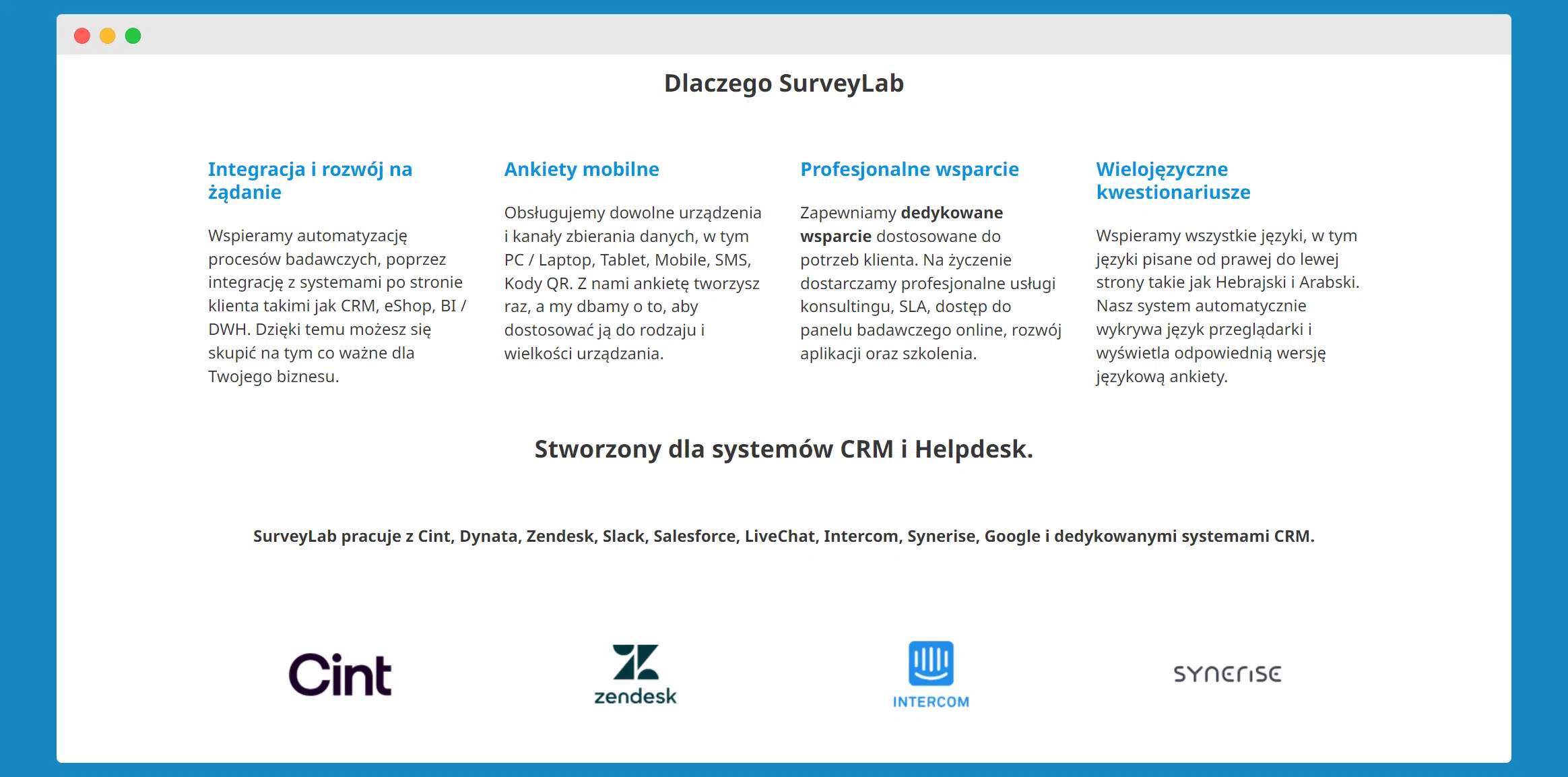To gather demographic information through your own survey allows you to understand the varied life experiences, cultures, and identities of your respondents.
By crafting questions that delve into the fabric of people’s lives—ranging from age group to employment status, and beyond—you, the survey creator, are equipped to navigate this sea of information.
Your mission? To collect demographic information that is as rich and multifaceted as the individuals it represents. With each survey anonymous, you ensure a safe harbor for honesty, allowing the true colors of your audience to shine through.
The info you seek? Insightful survey results that guide you—be it for market research, enhancing customer interactions, or tailoring marketing strategies—towards more meaningful engagements with your target audience.
What are Demographic Questions for Survey?
Demographic questions for surveys are designed to collect background information about the respondents, such as their age group, employment status, and more. These questions help survey creators understand the broad range of individuals within their target audience, including potentially unemployed respondents, and gather essential demographic examples. By incorporating these questions into a survey, creators can ensure that the survey results reflect the diverse backgrounds and experiences of their audience, enabling more informed decisions and strategies.

Source: Storyset
Benefits of Asking Demographic Data Questions in Surveys
Understanding Your Audience Through Demographic Questions
Gathering demographic data through surveys can significantly enhance your understanding of your target audience. By incorporating demographic survey questions, you can obtain a comprehensive snapshot of survey respondents, including their employment status, annual household income, and marital status. This information is crucial for tailoring marketing efforts and developing strategies that resonate with your desired audience. It also helps in segmenting audiences based on various demographic factors, allowing for more targeted and effective marketing campaigns.
Enhancing Market Research with Demographic Survey Data
Utilizing demographic survey questions in your market research can reveal significant details about your survey participants. This includes sensitive demographic questions like participant’s employment status and household income or even location data (unless you use an IP geolocation API to get that information). Such demographic survey data aids market researchers in identifying trends, understanding the target market, and making informed decisions. It’s not just about data collection; it’s about gaining deeper insights into the demographic factors that influence customer behaviors and preferences.
Tailoring Marketing Strategies with Demographic Information
Demographic questions for surveys enable marketing agencies to tailor their strategies more effectively. By understanding the demographic information of survey respondents, such as age groups, education level, and primary language, marketers can craft messages that resonate more deeply with their target population. This approach ensures that marketing efforts are not just broad but also deeply connected with the specific needs and preferences of current and potential customers.
Segmenting Your Market for Better Targeting
Market segmentation is a critical benefit of collecting demographic information through surveys. By asking the right demographic survey questions, such as age ranges, marital status, and how many children or dependents respondents have, businesses can segment their audience into more precise groups. This segmentation allows for more personalized marketing strategies and helps in creating buyer personas that reflect the real needs and desires of the target audience.
Improving Customer Interactions with Demographic Insights
Demographic surveys offer a unique opportunity to improve customer interactions by understanding the important cultural details and personal beliefs of survey takers. This sensitive information, gathered through personal questions in demographic surveys, can inform businesses about the cultural influence on their target group, enabling more respectful and engaging customer interactions. It’s about speaking the same language and acknowledging the cultural backgrounds of your audience.
Identifying Trends and Preferences in Your Target Market
The strategic use of demographic survey question examples in online surveys can help businesses identify trends and preferences within their target market. By analyzing survey responses related to local or national politics (as well as consultancy on local reports and insights), political preferences, or even personal beliefs, companies can gain a deeper insight into what drives their target audience. This knowledge is invaluable for adjusting marketing strategies to align with the evolving preferences of potential customers.
Creating Effective Surveys with Thoughtful Demographic Questions
Designing an effective customer survey involves more than just asking about current employment status or annual household income. It requires a thoughtful selection of demographic survey questions that encourage survey respondents to reveal significant details about themselves. Offering answer options like “prefer not to say” ensures that the survey remains respectful of sensitive demographic questions, making survey participants more willing to share their information.
Leveraging Demographic Data for Comprehensive Market Analysis
Finally, the power of demographic survey data extends beyond simple market research. It provides a foundation for comprehensive market analysis, enabling businesses to identify trends, segment audiences, and refine marketing strategies. By collecting and analyzing demographic information from survey respondents in addition to website data, and social media analytics, businesses can gain a deeper understanding of their target market, uncovering the demographic factors that influence purchasing decisions and customer loyalty.
Types of Demographic Survey Questions

source: Storyset
Crafting the Perfect Introduction to Your Demographic Survey
Starting your survey with a brief introduction sets the tone for the entire questionnaire. It’s crucial to explain why you’re collecting demographic information and how it will be used. This reassures respondents, especially when sensitive demographic questions are involved. For example, you might say, “We’re gathering this information to better understand our diverse audience and tailor our services to meet your needs. Your responses will remain anonymous.” This approach helps build trust and encourages more honest and thoughtful responses from your target audience.
Diving Into Age: How to Ask Without Overstepping
When it comes to demographic survey questions, age is a staple. However, asking for an exact age can feel intrusive to some. Instead, consider using age ranges or groups, such as “18-24,” “25-34,” etc. This method gathers demographic information while respecting privacy. You might phrase it like, “Please select the age range that includes your current age.” This approach balances the need for demographic data with the respondent’s comfort, ensuring participation without pressuring them to share more than they’re willing to.
Employment Status: A Key Indicator of Consumer Behavior
Understanding the employment status of your survey respondent provides valuable insights into their purchasing power and needs. A question like, “What is your current employment status?” with options such as “Employed full-time,” “Part-time,” “Self-employed,” “Unemployed,” and “Prefer not to say” can reveal a lot. This information is particularly useful in market research, helping to tailor marketing strategies and create more accurate buyer personas. It’s a straightforward question that, when answered, can significantly impact how businesses approach their target market.
Marital Status and Household Composition: Beyond Just Numbers
Asking about marital status and household composition offers a glimpse into the respondent’s life stage and priorities. Questions like, “What is your marital status?” and “How many dependents do you have?” provide context for purchasing decisions and lifestyle preferences. These insights are invaluable for creating marketing efforts that resonate on a personal level. For instance, knowing that a significant portion of your audience is married with children can steer your marketing strategies towards family-oriented products or services, such as accountability software for protecting kids’ devices from harmful content.
Income Level: Treading Carefully While Gaining Insight
Income level is a sensitive but crucial piece of demographic information. It helps in understanding the economic status of your audience. A question structured as, “What is your household’s annual income range?” with broad categories allows respondents to answer without sharing exact figures. Including a “Prefer not to say” option respects privacy while still gathering useful data for market segmentation and analysis. This question helps in tailoring products, services, and marketing messages to fit the financial realities of your target audience.
Educational Background: Understanding Your Audience’s Knowledge Base
The education level of your survey participants can tell you a lot about their interests, understanding, and potential needs. A question like, “What is the highest level of education you have completed?” with options ranging from “Some high school” to “Post-graduate degree” helps segment your audience based on their educational attainment. This demographic question aids in refining content, messaging, and even product development to match the educational background of your target market, ensuring that customer interactions are always relevant and engaging.
Language and Cultural Insights: Building Deeper Connections
Asking about the primary language spoken at home can provide deep insights into the cultural background and preferences of your audience. This question, framed as, “What is the primary language spoken in your household?” helps in understanding the cultural diversity within your target market. It’s essential for tailoring marketing strategies and content to be culturally sensitive and inclusive, enhancing customer interactions and engagement across different segments of your audience.
Tailoring Questions to Young Voters: Engaging the Next Generation
For surveys targeting young voters or a younger demographic, it’s important to ask questions that reflect their unique concerns and lifestyle. Questions about education level, current employment status, and political preferences, phrased in a way that resonates with younger audiences, can provide valuable insights. For example, “As a young voter, what issues are most important to you?” This approach not only gathers demographic information but also engages a critical segment of the population, offering insights into their motivations and values.
How to Encourage Survey Respondents to Fill in Your Survey?
There are a couple of things that you can do to increase the response rate.
Make Your Survey Easy to Answer
A user-friendly tool is key here. One of the platforms that is affordable and easy to navigate is Surveylab. It’s got many question types; you can create your survey engaging, and it is not boring. Also, collecting and analyzing data from demographic surveys is streamlined and organized. You don’t have to worry about the survey logic as well.

There are other tools like:
Check them out to choose the best fit for you needs.
Make It Relevant: Tailor Questions to Your Audience
To engage survey respondents effectively, ensure your demographic questions are directly relevant to their experiences. When participants see questions that resonate with their life—like marital status or household income—they’re more likely to contribute. Explain how their demographic information will enhance your marketing efforts, making the survey feel like a meaningful conversation rather than a generic questionnaire.
Offer Anonymity: A Safe Space for Honest Answers
Highlighting the anonymous nature of your survey can significantly increase participation rates. When respondents know they can share sensitive demographic questions without revealing their identity, they’re more inclined to provide honest answers. Assure them that their responses, whether it’s about current employment status or household income, will be kept confidential.
Simplify the Process: Keep It Short and Sweet
Nobody wants to spend ages filling out a survey. Keep your demographic survey questions concise and to the point. A shorter survey with clear, straightforward demographic questions encourages more people to complete it. Let your participants know upfront how long the survey will take, emphasizing that their valuable insights can be shared in just a few minutes.
Provide Options: Inclusivity in Answer Choices
When crafting demographic survey questions, include a broad range of answer options to cover diverse respondent backgrounds. For sensitive demographic questions, always offer a “prefer not to say” option. This inclusivity shows respect for the privacy of survey participants and makes them feel more comfortable sharing their demographic information.
Incentivize Participation: A Little Nudge Can Help
Offering incentives can significantly boost survey completion rates. Whether it’s a discount, a chance to win a prize, or access to exclusive content, incentives make respondents feel valued for their time. Tailor these rewards to your target market to ensure they’re enticing enough to encourage participation.
Personalize the Invitation: Make Them Feel Special
Personalized invitations to take your survey can make a big difference. Use the recipient’s name and mention something that indicates why their feedback is important. A personal touch can transform a standard request into a compelling invitation, making your survey an integral part of your customer interactions and marketing strategies.
Utilize Social Proof: Show the Impact of Their Voice
Share examples or testimonials from previous surveys where respondent feedback led to real changes or improvements. This demonstrates the value of their input and how it contributes to shaping products, services, or marketing strategies. Knowing their opinions can make a difference encourages more people to participate.
Follow Up Respectfully: Remind Without Annoying
A gentle reminder can go a long way in boosting response rates, especially for those who might have missed your initial invitation or forgotten to complete the survey. However, it’s crucial to follow up respectfully—avoid bombarding them with messages. A single, well-crafted reminder highlighting the importance of their feedback can motivate those last few respondents to fill in your survey. With a personalized approach, you can always catch the attention of your target. Thus, always consider having an executive assistant who takes care of personalizing the communication with your audience.

Source: Storyset
Key Takeaways
- Tailor demographic questions for surveys to resonate with the target market, increasing relevance and response rates.
- Ensure anonymity for survey respondents, especially when asking sensitive demographic questions, to encourage honest feedback.
- Keep surveys concise; respect the time of survey participants for higher completion rates.
- Include a “prefer not to say” option for sensitive demographic questions to respect privacy.
- Offer incentives to motivate survey respondents, aligning rewards with their interests.
- Personalize survey invitations to enhance engagement and show appreciation for participants’ insights.
- Utilize social proof to demonstrate the impact of survey responses on marketing efforts and product development.
- Send respectful follow-up reminders to increase survey completion rates without overwhelming respondents.
- Collect demographic information through well-crafted demographic survey questions to inform marketing strategies.
- Use demographic survey data to understand and segment your audience for targeted customer interactions.
- Design demographic survey questions to gather a broad range of demographic examples, enriching data quality.
- Focus on creating a survey experience that values the time and privacy of participants, fostering trust and cooperation.
Conclusion
Gathering demographic information through surveys is a powerful tool for understanding and engaging your target audience. By implementing these strategies, for example, using a reliable surveying tool like Surveylab, you can enhance the quality of your demographic survey data, leading to more informed marketing efforts and stronger customer interactions. Remember, the key to a successful survey is respecting and valuing the participants’ contributions.
Sign up for Surveylab, and start creating surveys with demographic questions today.
FAQ
1. How would you describe your current employment status?
2. What is your age range?
3. What is your household income bracket?
4. What is your highest level of education?
5. How satisfied are you with our product/service?
Questions that gather demographic data include inquiries about age, gender, income level, education, marital status, employment status, household size, and primary language. These questions help in understanding the diverse characteristics of survey respondents.
A demographic sample survey is a research tool used to collect data on the characteristics of a population. It focuses on gathering demographic information from a subset of individuals to infer trends and patterns applicable to the larger population.
1. Age
2. Gender
3. Income level
4. Marital status
5. Education level
6. Employment status
7. Household size
8. Ethnicity
